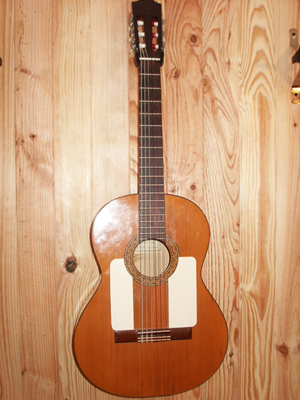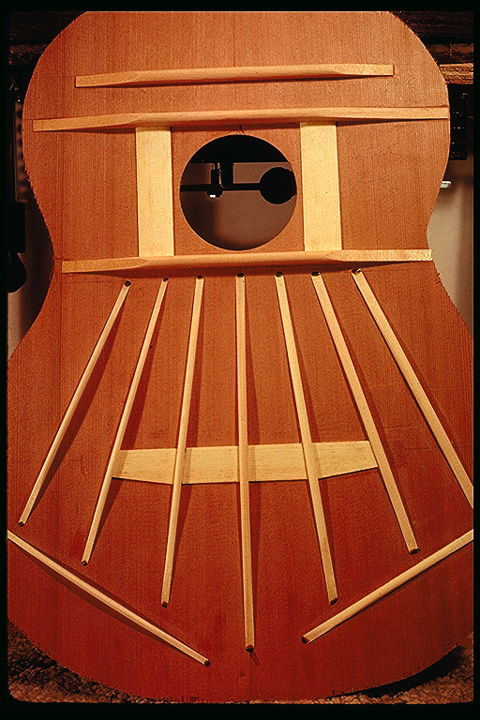That's awesome Dave, definitely interested in seeing pics when you're done. I'm useless when it comes to guitars so what's the main differences between classical and flamenco guitars? Is it in the materials or the design or something else?
It's a combination of both. Some people will use classicals for flamenco (soloists in particular, as the clasical has a warmer more sustaining tone), but the flamenco guitar is different.
First of all, materials. The classical will typically have a spruce or cedar top (spruce being a bit brighter). Flamencos almost excusively are spruce. The sides (ribs) and the back are where the differences really begin. Classicals will mostly use rosewood of some kind (mine is brazilian rosewood, aka jacaranda). Flamencos are traditionally made of cypress (historically, Spanish cypress, though it is expensive now as it is, I believe, endangered). The fingerboards of classicals use ebony (like violins) or dark rosewood, as will flamencos. The bridges on both are ebony. The flamenco will have
golpeador, or tap plates attached to the soundboard. They protect the guitar from the percussive taps that are part of flamenco guitar playing (golpe).
Traditionally, flamenco guitars had wooden, friction tuning pegs, like a violin.
Nowadays, most come with the same kind of tuners that you find on a classical. Some people claim that the wooden ones improve the sound, but I think tuning is a lot more difficult.
The design is where the biggest differences are, and they reflect the different manner and settings in which the two instruments are played. The classical is built in such a way as to have a rich, even, sustaining tone. It's typically a solo instrument, lyrical and harmonious. The flamenco guitar basically got its start accompanying dancers, and was played a lot more percussively. It was like drums and guitar in one. It had to cut through a real racket (the dancers stomp around and provide the other part of the percussion). And it was played very fast. So, keeping that in mind...
Flamenco sound boxes are thinner (making the sound more trebly and cutting), the wood is thinner. The top isn't really domed at all, wheras it is slightly in a classical. The bracing on a flamenco is thinner (to help the top move more at the higher frequencies), and may even have less bracing. They both use "fan bracing"
(steel strings use an x-brace, typically because it is stronger--the strings exert 180 pounds of force on the soundboard when tuned to pitch!),

and every luthier does bracing differently. Even Torres, the great luthier who built Segovia's guitars, would change bracing patterns and thicknesses of braces from guitar to guitar, even if the dimensions were the same! Why? Well, I guess they tuned the tops by ear (using the mystical "tap tones" you hear about), and different pieces of wood respond to vibration differently.... Flamenco necks have little to not tilt (relief), the the frets are lower, and the saddle is thin, all contributing to lower action. As a result, flamenco guitars tend to be more buzzy than their classical counterparts, but that's part of the sound. It adds to the percussiveness. It does diminish the sustain (but in this fast strumming style, that's not a huge concern, I'd imagine). You typically string it with higher tension strings to account for this and improve playability.
So, in a nutshell: flamencos are brighter (in an uneven way), less sustaining, but faster than a typical classical.





